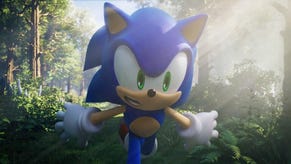Sonic Frontiers review - new open zone direction still constrained by old flaws
Rings and roundabouts.
Gaze upon this new frontier and it's clear this is no Sonic of the Wild, or Elden Hedgehog. Nonetheless, like those two allusions that fans have been making ever since it was announced, Sonic Frontiers is a necessary new direction for the Blue Blur to modernise with his peers - one that attempts to finally pull his speedy form into a genuine 3D game.
More than Dr. Eggman's nefarious schemes, 3D has been Sonic's long-running nemesis since his 3D debut with Sonic Adventure more than 20 years ago (although it arguably began with the cancelled Saturn game Sonic X-treme). Too fast for his own good, or for the camera to keep up, Sonic Team has opted to keep its mascot firmly within linear routes like a rollercoaster ride, hoping dazzling visuals would distract you from realising you were doing little more than holding up.
Frontiers then is the team finally having the confidence to let Sonic roam freely in vast open environments at the speed you expect him to achieve. It seems a no-brainer since, for me, traversal has always been one of the greatest pleasures in any open world game - my fondest memory of the sorely underappreciated Xenoblade Chronicles X is having an avatar who could bound across the world at a superhuman default running speed. For those concerned whether they can keep up, you can also customise Sonic's speed settings, from acceleration to turning, though I was actually fine with turning it to max.
Of course, Sega has been at pains to distinguish these open zones from traditional open worlds, which in practice means the different areas that make up Starfall Islands are built with the objects of past games designed to propel you in one set direction. Springs! Boosters! Grind rails! So while in theory you have free 3D roaming, Sonic Frontiers is actually filled with branches of linear routes. More perplexing, however, is when the camera is wrested away from you so, suddenly, you're in a 2D platforming section. It's a peculiar decision to have these elements in the open zone, as if Sonic Team was afraid to commit to a proper 3D world. The main effect is that, on reverting to 3D, you end up losing your bearings - not helped when the compass doesn't tell you which way is North.
Although the latest version of the Hedgehog Engine may be incorporating Quixel Megascans to render photorealistic environments, there's something just very unremarkable about the aesthetics of each of these barren islands of generic desert, volcano, and forest, with ruins hinting of an ancient race that had existed before. It makes the placements of springs and rail grinds as incongruous as the mournful ambient score, which feels at odds with the high energy vibe you'd expect from a Sonic game.
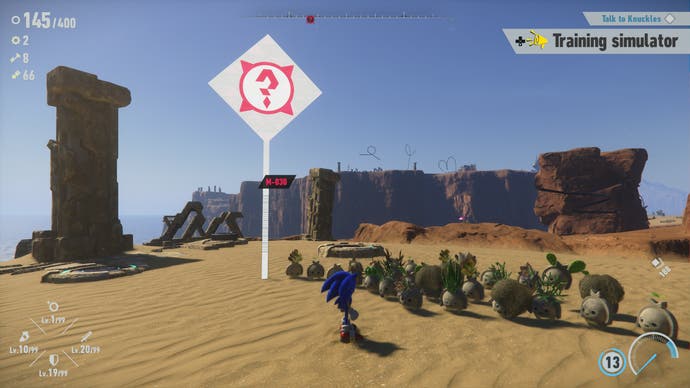
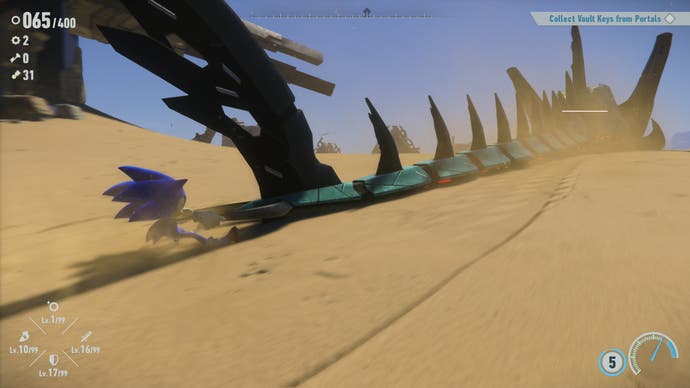
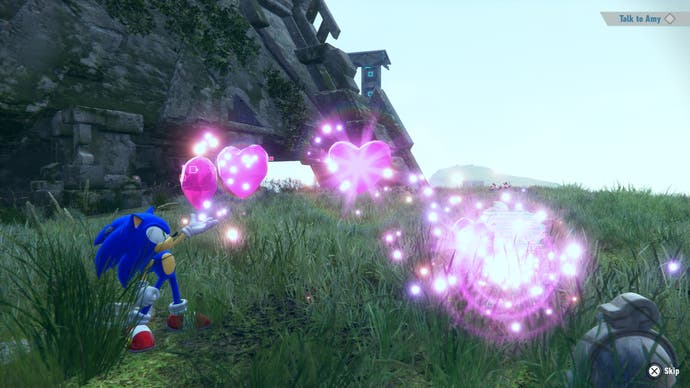
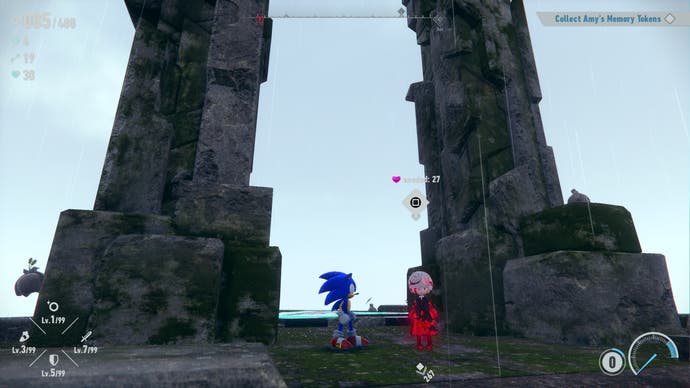
Past games also had level design that would be equally ludicrous if you were to take a step back to scrutinise them, but it's rare that you would when you're in the thick of the action, getting zipped and pinged from one place to the next. Unfortunately, in an open zone where you can just take these views in, there's more time to ponder how everything seems to exist with no rhyme or reason. Even Station Square had better worldbuilding.
Adding to the eyesore is the atrocious amount of pop-in throughout - even on a PS5! I lost count of how frequently platforms or other environmental objects would just appear from nowhere, sometimes within yards of where Sonic is. These fortunately don't occur right in front of your path so as to become a gameplay issue but it didn't make me wince any less every time it happened.
Apart from learning that Sonic's friends, Amy, Knuckles, and Tails have been trapped in Cyber Space, and basically turned into digital ghosts who need to have their corporeal forms restored, there's little setup to establish the new features, which makes everything more nakedly video gamey. Collect memory tokens to unlock new conversations! Level up Sonic's speed and other attributes! Unlock new skills! Oh, and here's a fishing mini-game with Big the Cat! It's all slapped together and explained with a quick tutorial boxout, and then off you go. 'This is what modern games do', the explanation appears to be, rather than justifying why they're in a Sonic game. Even the stone-like Kocos that you collect to upgrade Sonic's attack and defence have little charm compared to the Koroks they're clearly ripped from; where in Breath of the Wild there's a delight in discovering one hidden away, these just simply stand around, sometimes blending in with the environment, in such a way that you're more likely to either pick them up or miss them without realising.
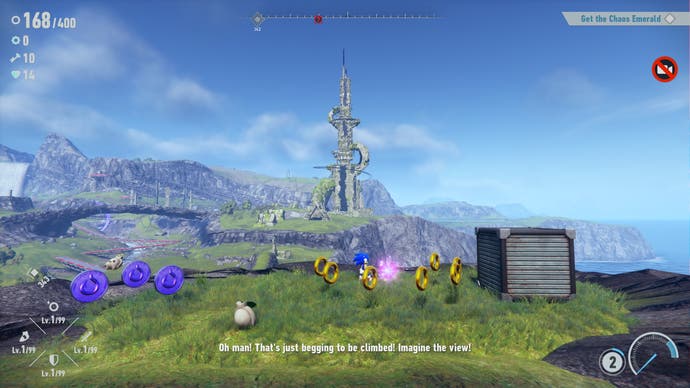
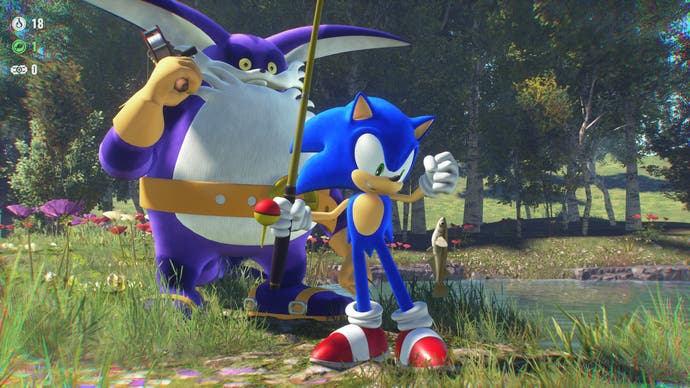
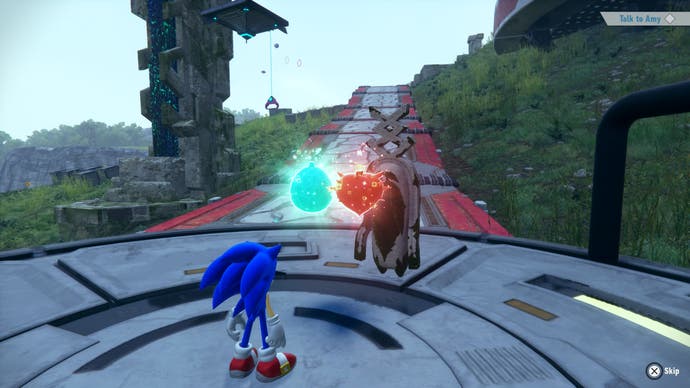

It's a shame that the presentation and design issues makes Frontiers an easy target for naysayers, because when you get down to the fundamentals, there is a fun game with new ideas here. An unexpected highlight comes from combat, never previously a priority in Sonic games, where homing spin attacks was more of a traversal tool. The hedgehog has a more varied moveset than just those spin attacks now, starting with the new Cyloop skill, where drawing a loop with a light trail left behind him can have effects on enemies and puzzles. More moves are unlocked over time, including a projectile attack that shares the same name as one synonymous with Street Fighter's Guile. It's often a case of mashing or holding buttons but looking flashy as you do it, and to illustrate the low skill ceiling, you can parry by simply holding down the two bumper buttons together to anticipate an attack instead of split second timing.
What really makes the combat satisfying are the mini-bosses, ancient machines that take on a more threatening form than the series' cartoonish badniks. There's a good variety to keep you on your toes, even if you feel like you've got the measure of the game's structure by the time you've completed the first island. More importantly, the difference in mini-boss designs, be it the fast-paced Ninja or the seemingly impenetrable Sumo who traps you inside a ring with electrified fences, makes each fight feel like a unique puzzle to solve in order to expose their weakness before mashing away with your attack of choice. These feel even grander when you're taking on larger colossi-type enemies, or the main boss Titans. The latter have more of a cinematic choreography approach but nonetheless provide Frontiers with visual set-pieces - as well as a thumping rock metal soundtrack, which feels more in line with the Sonic of old.
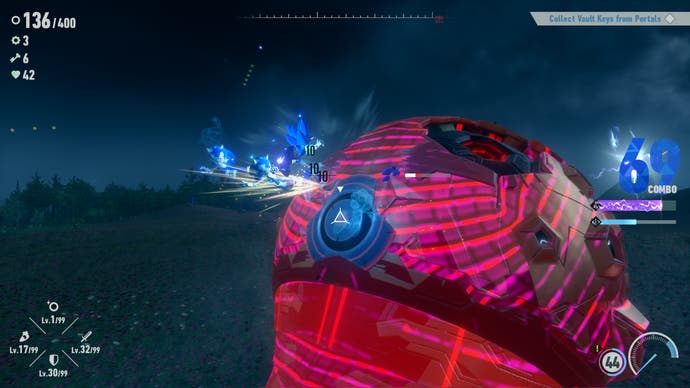
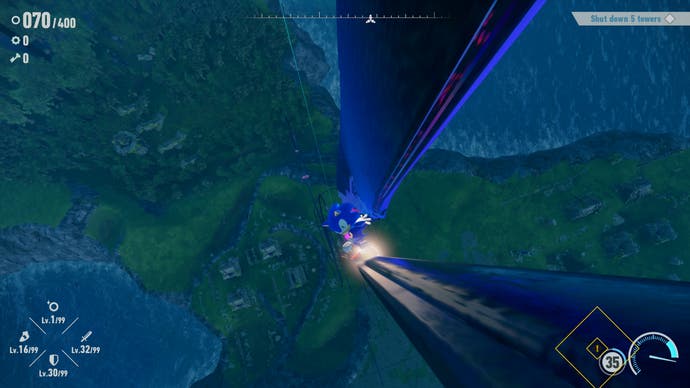

Defeating mini-bosses is also the main way to get hold of portal gears, one of the game's many collectibles, which are required to access Cyber Space levels, which in turn award you with vault keys required to collect the Chaos Emeralds. These are essentially the 'classic' linear action stages played in 3D or 2D perspectives, which feels like a concession to fans sceptical over the open zone gameplay. I'd almost liken them to the Elden Ring's mini dungeons, though: more self-contained and digestible slices of the past.
These make for a good break from the open zone, and are a purer Sonic experience than the throwaway mini-games that also crop up (although a hacking mini-game that riffs on Ikaruga is inspired). But again these fall short of the imaginative levels of the earlier 3D Sonic games. Just how many times can you recycle Green Hill or Chemical Plant? 'Not enough', the answer appears to be.
They're at least much shorter and tighter than in recent games, so restarting is relatively painless and you can swiftly see the back of the frustrating ones. There's also incentive to replay to get things like an S rank time, all the red rings, or a set number of rings, each netting you another vault key. The targets however often feel inconsistent. In one stage I attempted every quick hack to shave down my time and still fell short of the S rank, yet in another I died midway and still somehow completed all the challenges on the first try.
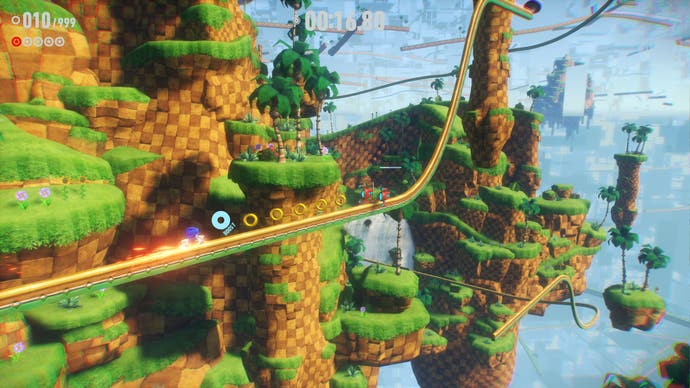

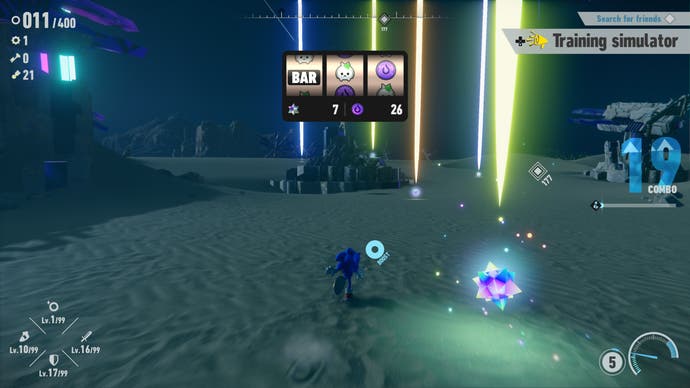
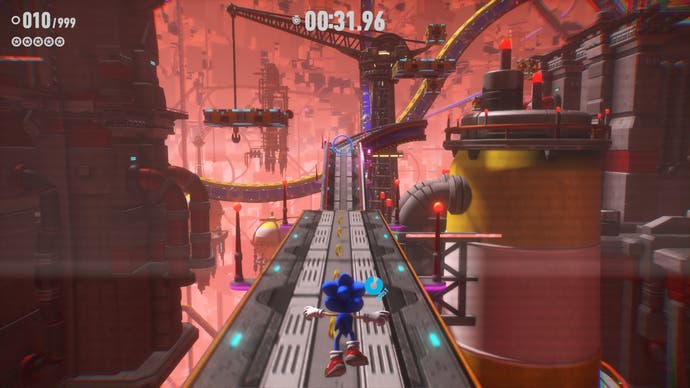
But whether open zone or Cyber Space, there's still no getting around the age-old headache that's plagued every 3D Sonic game: inconsistent physics, where you might suddenly grind to a halt on a boost path, or break out of a spring jump animation and veer off its trajectory. There may no longer be a lives system, and the open zones' huge land masses mean at least you're not falling into bottomless pits, but it doesn't make having to redo platforming sections any less irritating.
Sonic Team's Takashi Iizuka has spoken about how Frontiers is set to pave the way for the series. So as the first attempt, perhaps it's best not to draw comparisons with Breath of the Wild but Pokémon Legends: Arceus, a scrappy experiment that nonetheless showed potential of the series' future that will hopefully be refined in the upcoming Scarlet and Violet games.
However, Frontiers is too often bogged down by very visible flaws, ones I can already see potentially meming the game into an early grave. That would be a shame, as when you're in the moment of the momentum, there's still an interesting and fun time to be had, certainly compared to the streak of disappointments that fans have endured in previous decades. Yet for hardcore traditionalists who only want to see their blue hedgehog in two dimensions, this isn't the 3D outing that's going to change their minds.
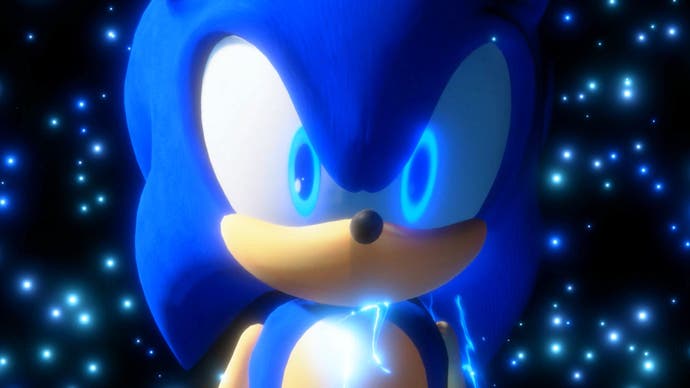


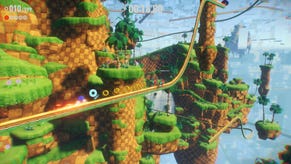
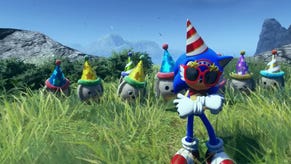



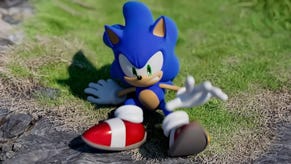
.png?width=291&height=164&fit=crop&quality=80&format=jpg&auto=webp)
